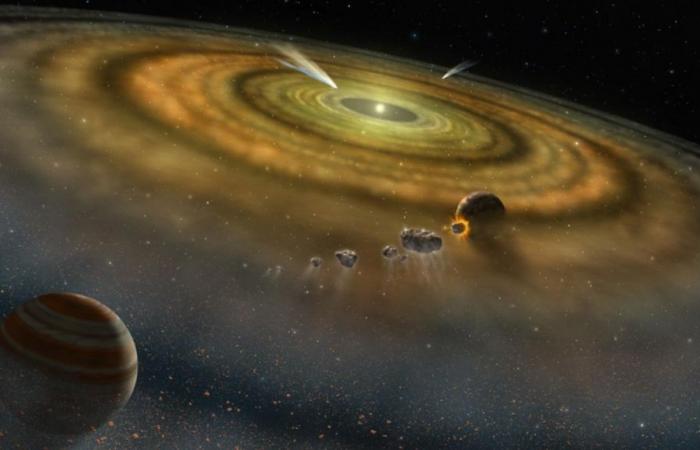
The James Webb Space Telescope (JWST) has observed signs that asteroids have collided in a nearby star system. The dust resulting from the collision would have a mass equal to about 100,000 times that of the asteroid that helped wipe out the dinosaurs.
A young system where chaos reigns
The collision took place inside the Beta Pictoris star system, located 63.4 light years away. Unlike our old Sun and its 4.6 billion years of existence, Beta Pictoris is very young, only 20 to 25 million years old. This stellar system is therefore not formed like ours currently, with its fairly well-arranged procession of planets and other celestial bodies. Within Beta Pictoris, planets are still being born and the observed asteroid collision is a witness to this. Indeed, in forming systems, collisions of giant asteroids are an integral part of the process of creating terrestrial planets and rocky objects.
Advertising, your content continues below
A deduction over 20 years
What the JWST observed is not the collision itself, because the distance is much too great and the protoplanetary disk of Beta Pictoris is in any case too dense to detect such an event. On the other hand, the space telescope detected signatures, markers of the collision.
To achieve this, astronomers compared the data collected by the JWST with those recorded 20 years earlier by another space telescope, the Spitzer Observatory. This comparison revealed significant changes in the energy signatures of dust grains around Beta Pictoris, particularly heat emitted by minerals commonly found around young stars and on Earth: crystalline silicates.
Specifically, JWST allowed researchers to track the composition and size of dust particles in the exact area Spitzer previously analyzed. And the James-Webb actually found nothing! No traces of the particles observed by Spitzer two decades ago have been found again. This means that a cataclysmic collision between asteroids or other objects around Beta Pictoris took place about twenty years ago, pulverizing these bodies, turning them into a shower of particles as fine as powdered sugar. Since then, the dissipation action has done its job and nothing is now visible.
Advertising, your content continues below





